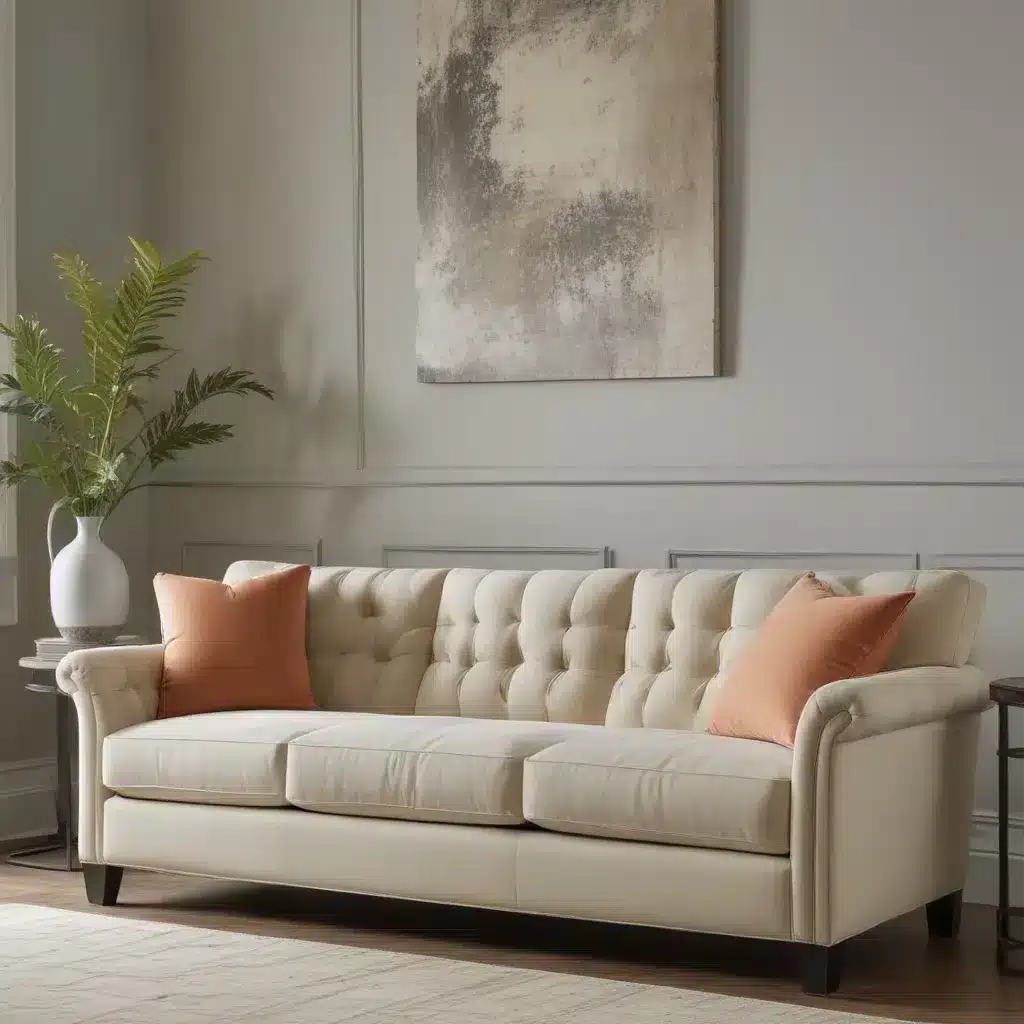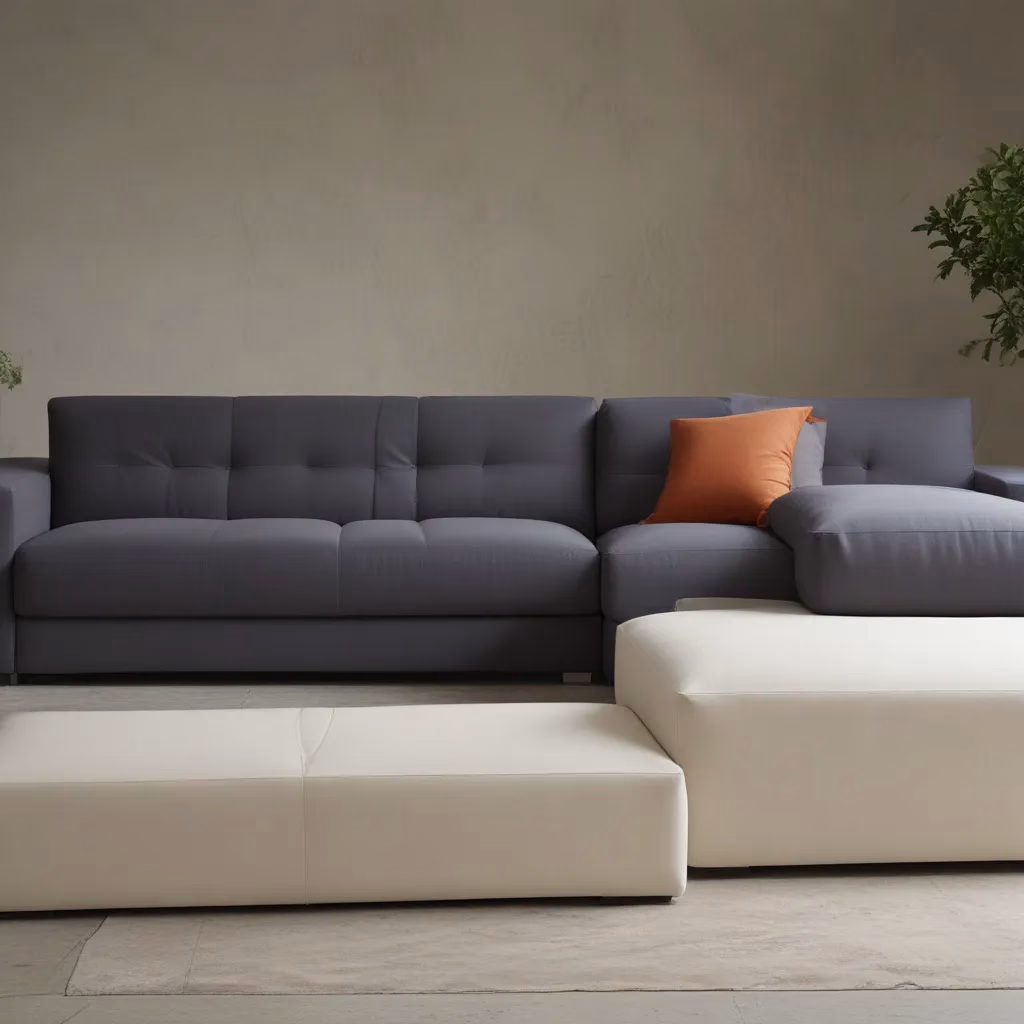The Tale of the Mismatched Sofa
Oh, the stories I could tell you about my decorating mishaps over the years! Let me start with the time I tried to mix and match furniture like a pro, only to end up with a living room that looked like a scene straight out of the ’80s.
It all began when I moved into my second apartment in downtown Vancouver after my divorce. My ex-husband and I had previously decorated our place in the quintessential forest green trend of the 80s, and I was left with a massive, overstuffed forest green chair and ottoman with those huge, rolled arms. You know the kind – it was like sitting in a giant, verdant marshmallow. Just picture something even bigger, more like a chair and a half.
When I moved into my new apartment, I still needed a sofa, so I headed to the local department store and chose a taupe and cream fabric with a lovely leaf texture and tuxedo-style arms. I was pretty pleased with my choice until the day it was delivered. Arranging the sofa and my oversized forest green chair in an L-shape, I was absolutely horrified. It looked dreadful – the styles just did not complement each other at all. It was similar to this nightmare of a pairing.
Luckily, my designer friend Pat Wickware swooped in that weekend and saved the day. She rearranged the furniture, moving the offending green chair to the opposite corner, and we went on a quick shopping trip to find some complementary end tables. Voila! It all came together beautifully. But that was my first expensive design lesson – always consider the arm style when purchasing new furniture.
Arm-y of Knowledge: Mastering Sofa Arm Styles
Since that fateful day, I’ve learned a thing or two about how to properly coordinate arm styles in a room. Here are some general guidelines to keep in mind:
Stick to Traditional Arm Styles in the Same Space: As a general rule, you’ll want to keep traditional arm styles, like rolled or rounded arms, consistent within a single room. That said, there are always exceptions to the rule in design, but for the average homeowner, it’s best to stick to this principle for a cohesive look you can trust.
Take a look at these two wing chairs with rolled arms and a French-style rounded arm sofa. See how the arm styles complement each other beautifully? You can even repeat the sofa arm style on the chairs, using different fabrics, for a harmonious look.
Similarly, an English arm sofa pairs perfectly with rolled arm chairs – a classic combination that works exceptionally well.
Squared Away: Mastering Contemporary Arm Styles
But what about more contemporary, squared-off arm styles? The rules are a bit different here. If you have a sofa with squared, track-style arms, you’ll want to keep the arm style consistent on any accompanying chairs. Take a look at this loft I designed – the chairs have regular track arms, just like the sofa, keeping the lines clean and contemporary.
Breaking the Rules (Tastefully)
Of course, as with any design guideline, there are always exceptions. Take a look at this living room – the sofa has large, rounded arms, while the chairs have track-style arms. But it works because the arm heights are the same, and the overall aesthetic is cohesive.
Another example is this space, where we have two small, rolled arm chairs paired with two sofas featuring square arms. It works because the chair arms aren’t too skinny, and the T-cushions on both the chairs and sofas create a visually balanced look. Plus, the chairs are in a bold, contrasting color, which helps tie the disparate arm styles together.
So while the general rule is to stick to consistent arm styles, there’s always room for some creative flair. The key is to ensure the overall aesthetic is harmonious and the arm heights are similar, even if the specific arm styles vary.
Mixing Old and New: Blending Furniture Eras
But what about when you have a mix of old and new furniture pieces? Maybe you’ve inherited some family heirlooms or scored some vintage gems at a flea market, and you’re trying to incorporate them into your more modern decor. How do you make it all work together?
Well, let me tell you about my own furniture journey. My first sofa was a gorgeous, dark brown velvet tuxedo style that my in-laws gifted us as a wedding present back in 1977. I still haven’t gotten over how much we paid for that custom sage green sectional in 1994 – it was like buying a new car!
Over the years, I’ve had my fair share of hits and misses when it comes to mixing old and new. The one that really stands out was when I paired my traditional, wing-back sofa with some end tables I had picked up on sale. The problem? The sofa had those classic Queen Anne legs, and the end tables did too. It was a veritable leg-apalooza, and I felt like I was going to get seasick just looking at it.
The moment of genius came when I exchanged the tables for some with straight legs from my guest room. Suddenly, the room felt harmonious, not overly repetitive. Phew!
So, the key when blending old and new is to look for common threads – maybe it’s the arm style, the leg shape, or even the overall silhouette. You don’t want everything to match perfectly, but you also don’t want it to feel like a jumbled mess. It’s all about finding that sweet spot where the pieces complement each other and create a cohesive, yet eclectic, look.
Putting it All Together: Tips for Sofa and Chair Pairings
Now that we’ve covered the ins and outs of arm styles and mixing furniture eras, let’s talk about how to pair your sofa and accent chairs for maximum impact.
First and foremost, consider the cushion style. You can absolutely mix and match – a T-cushion sofa can work beautifully with standard-cushion chairs, and vice versa. The key is to ensure the overall aesthetic is balanced and visually appealing.
As for the legs, the general rule of thumb is to match the furniture pieces. So if your sofa has legs, it’s nice to have the accent chairs feature skirts or legs as well. But in a more modern space, you might opt for a clean, legless look across the board.
And don’t forget about color and pattern! If you have a solid, neutral sofa, consider bringing in some visual interest with patterned accent chairs. Or, if your sofa features a bold print, you can ground it with some solid-colored chairs. The possibilities are endless!
The most important thing is to trust your instincts and have fun with it. Decorating should be an expression of your personal style, not a rigid set of rules to follow. So get out there, explore the latest arm styles and accents, and create a living room that truly speaks to you.
Oh, and one more piece of advice? Steer clear of anything in a trendy color. Stick to neutrals for the big, expensive pieces, and use pillows, throws, and accessories to inject those of-the-moment hues. Trust me, your future self will thank you.
Now, if you’ll excuse me, I’m off to Sofa Spectacular to browse their latest arm styles and accents. Who knows what new decorating adventure awaits!




